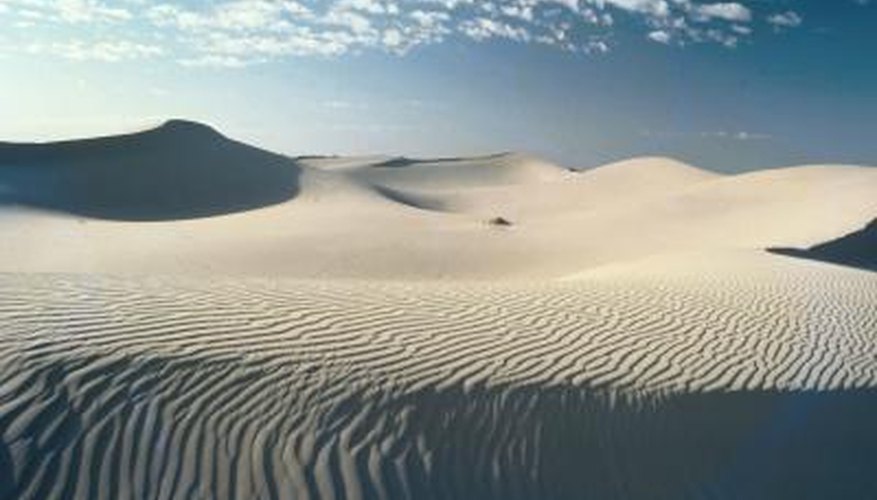Deposition is the process by which rocks, sand and sediment are deposited by the forces of erosion. Deposition is intimately tied to the processes of weathering and erosion. First, rocks are broken down into small pieces. This process is known as "weathering." Small pieces of dirt and sand are then picked up by forces of nature in a process known as "erosion." When those sediments are left in a new place, this is called "deposition."
Agents of Erosion and Deposition
The natural forces that move--or erode--sediments are the same ones that deposit them. There are four primary agents of deposition. Glaciers pick up rocks and deposit them as they move. Gravity acts as an agent of deposition when rocks fall or tumble downhill. Wind picks up lighter forms of sediment, such as dust and sand, and deposits them as it slows. Water is an agent of deposition in many forms, including the actions of streams, runoff from rainwater that is not absorbed into the ground, and the actions of ocean waves.
- The natural forces that move--or erode--sediments are the same ones that deposit them.
- Wind picks up lighter forms of sediment, such as dust and sand, and deposits them as it slows.
Factors Affecting Deposition
Several factors affect when and where deposition occurs once sediment has been eroded. The velocity--or speed--of wind and water is of primary importance; as wind or water slows, heavier sediments drop out and are deposited. The density and size of sediment also affects the rate of deposition; because larger and denser particles tend to be heavier, they are deposited by wind and water before smaller, less dense particles. The shape of sediment also affects deposition rates; round pieces of sediment settle more quickly than flat pieces.
- Several factors affect when and where deposition occurs once sediment has been eroded.
- The density and size of sediment also affects the rate of deposition; because larger and denser particles tend to be heavier, they are deposited by wind and water before smaller, less dense particles.
Landforms Produced by Deposition
The process of deposition creates many types of landforms on earth. Rockslides on hills and mountains are created as gravity erodes and deposits rocks. In the desert, the deposition patterns of the wind creates sand dunes. Streams create deltas when they deposit sand and sediment at their mouths, where the water slows to meet the ocean. The waves of the ocean create beaches as they deposit sand over time.
- The process of deposition creates many types of landforms on earth.
- The waves of the ocean create beaches as they deposit sand over time.
Deposition and Egyptian Civilization
The action of the Nile river in ancient Egypt is one of the best examples of how deposition can positively affect human society. Each year, the Nile river flooded, depositing silt over the lands closest to its banks. Because of this fertile soil, the farmland could produce bountiful crops. In this way, the process of deposition was important to the flowering of ancient Egyptian civilisation.
- The action of the Nile river in ancient Egypt is one of the best examples of how deposition can positively affect human society.
